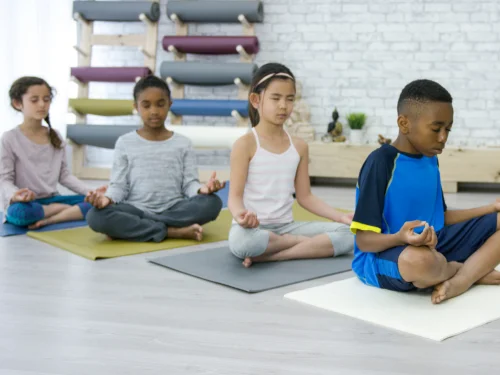5 Types of Grasps: Understanding Hand Function from Development to Daily Life

Yes—finger plays, clapping games, and dance routines that use hand gestures all help. Combine rhythm and repetition for deeper learning.
Send home simple activity ideas, kits, or worksheets. Offer short instructions and encourage family involvement. Regular practice builds lasting progress.
Try origami, sticker scenes, stringing pasta, or painting with Q-tips. Crafts that use small pieces build precision and control.
From holding a spoon to writing a letter or tying shoelaces, grasping is a fundamental hand skill that enables us to interact with the world. While most of us don’t consciously think about how we hold objects, the ability to form various types of grasps is essential for independence and function—especially for children learning new tasks or individuals recovering from injury.
This article explores the types of grasps used throughout daily life, how they develop, and why recognizing these patterns is important in fields like pediatric development and occupational therapy.
What Are Grasp Patterns?

Grasp patterns are coordinated hand movements that allow us to securely hold and manipulate objects. Each grasp recruits a unique combination of finger, palm, and thumb movements, tailored to the object’s size, shape, and required precision or strength.
Functional Grasp Types
These grasps are commonly used by children and adults during everyday activities:
1. Cylindrical Grasp
.webp)
- What it is: Fingers and thumb wrap around an object to form a tube-like shape.
- Used for: Holding a water bottle, broom, or flashlight.
- Developmental use: Often the first type of power grasp to appear.
2. Spherical Grasp
.webp)
- What it is: Fingers and thumb spread to grasp a rounded object.
- Used for: Catching a ball, holding an orange.
- Key movement: More extension of the ring and pinky fingers compared to the cylindrical grasp.
3. Hook Grasp
.webp)
- What it is: Involves the fingers (especially index and middle) without active thumb involvement.
- Used for: Carrying shopping bags, a lunchbox, or a bucket handle.
- Fun fact: One of the few grasps that doesn’t require thumb opposition.
4. Power Grasp
.webp)
- What it is: Thumb stabilizes the object against the palm while fingers flex around it.
- Used for: Holding tools like hammers or screwdrivers.
- Focus: Strength and stability over fine control.
5. Lumbrical Grasp
.webp)
- What it is: Metacarpophalangeal joints (base knuckles) flexed, with fingertips extended.
- Used for: Holding a tray, paper plate, or book.
- Note: Often impacted in individuals with median or ulnar nerve injuries.
Developmental Grasp Milestones
Grasps develop in a predictable sequence as children grow. These progress from reflexive and whole-hand movements to refined finger manipulation.
Types of Pencil Grasps
As fine motor control improves, children develop pencil grasps that support clear and efficient writing. These fall into two main categories:
Mature Pencil Grasps
- Dynamic Tripod: Pencil held between thumb and index finger, resting on middle finger.
- Dynamic Quadrupod: Similar, with ring finger assisting.
- Lateral Tripod/Quadrupod: Thumb presses pencil against the side of the index finger rather than using tips.
Immature or Transitional Grasps
- Palmar Supinate: Whole hand grasps the pencil with wrist turning inward.
- Digital Pronate: Fingers point downward, palm faces out.
- Static Tripod: Pencil rests on fingers, but wrist—not fingers—controls movement.
While the dynamic tripod is considered ideal, studies show that several alternative grasps can be equally functional as long as they allow for legibility and writing comfort.
What Affects Grasp Ability?
Several factors can influence whether a person can perform grasp patterns effectively:
- Muscle weakness: Can prevent firm or sustained grasp.
- Sensory issues: May result in objects being held too loosely or too tightly.
- Pain or injury: May cause fear or limited use of the hand.
- Limited range of motion: May restrict finger positioning for certain grasps.
- Neurological conditions or missing digits: May require adaptive equipment or training in compensatory strategies.
Supporting Grasp Development and Recovery
.webp)
For children and adults struggling with grasp function, interventions may include:
- Strength training: Using tools like Theraputty, resistance bands, or weighted items.
- Sensory re-education: Using texture-based play or vibration tools.
- Range of motion exercises: Focused on finger and thumb movement.
- Compensatory tools: Adaptive utensils, pencil grips, or foam handles.
- Activity-based repetition: Tasks like using clothespins, stacking blocks, or squeezing sponges can reinforce grasp patterns.
You May Also Like: 5 Major Benefits of Hand-Eye Coordination: Why This Skill Matters More Than You Think
Why Understanding Grasps Matters
.webp)
Whether you're an educator, parent, or therapist, knowing the different types of grasps helps you:
- Spot developmental delays or motor difficulties.
- Design age-appropriate activities.
- Support kids with learning differences or sensory processing challenges.
- Improve functional independence and writing efficiency.
You May Also Like: What Is Proprioception? Understanding Your Body’s Sixth Sense
Takeaway
.webp)
Grasp patterns might feel automatic to most of us, but they represent complex, skillful coordination between our brain, nerves, and muscles. Understanding the types of grasps and their progression provides a foundation for supporting children’s development and adult rehabilitation.
Whether you're helping a toddler learn to feed themselves or guiding an adult through hand therapy, every grasp tells a story—and knowing that story makes all the difference.
You May Also Like: Mouth Taping for Sleep: Get the Facts on How Mouth Tape Can Improve Your Breathing




